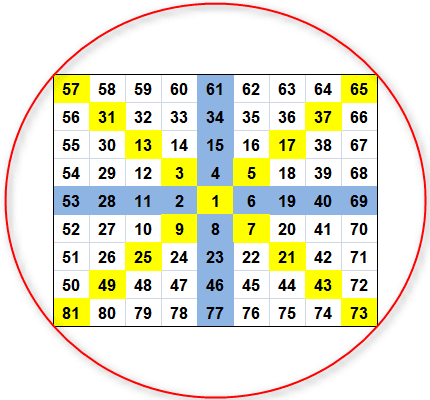Posted on Thursday, February, 17th, 2022 in Announcements.
Contents
![]()
Selecting https://forex-world.net/sWhen it comes to swing trading stocks, you have a lot of different securities to choose from. Breakout strategies are quite similar to trend following strategies. In other words, exactly as with the trend following strategy type. As with all types of trading, you could incur substantial losses with swing trading. Now, if you have a robust trading strategy, your chances of success increase manyfold, but nothing is 100% secure.

Because these stocks have high trading volumes, they offer investors insight into how the market perceives the company and its security price movements. This active trading offers the information necessary for what’s called technical analysis, which we’ll cover in the next section. Moreover, abrupt shifts in the market’s direction also pose a risk, and swing traders may miss out on longer-term trends by focusing on shorter holding periods. Swing trading is an adaptable method of trading stock that allows technical traders and investors to save time by utilizing these techniques. Technicalswing tradersuse technical analysis to research their positions.
Now you’ll be trading like the smart money does, which is in the big swing waves. Before diving into some of the key rules that make a swing trading strategy work, let’s first examine the advantages of using a simple swing trading strategy. You can also read about budgeting in Forex for better trading. But although learning how to start becoming a swing trader as a part-time or full-time job may be relatively straightforward, your capital is at risk. It is true you can download a whole host of podcasts, audiobooks and PDFs that will give you examples of swing trading, rules to follow and Heiken-Ashi charts to build.

With a bulletproof strategy and emotionless decision-making, you’ll win more than you’ll lose and come out on the right side of things. But to truly set yourself up for success, you need to rely on the right strategies. If you’re new to trading in general, it’s important to understand that you aren’t going to win every trade. If you’re looking for high returns, you’ll have to take higher risks. Similarly, you can play it safe and minimize your risks – but you’ll earn smaller returns. Timing the market is as simple as following trends with the help of mathematical models.
Although it’s not easy and neither is there a setup or strategy that works at all times, the favorability of the risk-reward ratio drives swing traders’ decisions. A favorable risk-reward ratio implies that a swing trader only needs to win a few times to make significant profits over multiple trades. On the other hand, the main difference between swing and day trading styles is the holding time.
This is mostly due to trading more volatile stocks and compounding gains quickly. Unfortunately, our luck did not last, and we lost $15,000 trying to trade stocks over the next 6 months. It took three years of trial and error to finally settle on a swing trading strategy that worked consistently for us. In this massive article on swing trading, we’ve covered a lot of topics that we know are going to be useful for an aspiring swing trader. Some of the most popular indicators for swing trading are moving averages, Bollinger Bands, RSI, MACD, and Fibonacci Retracements.
The trading rules can be used to create a trading algorithm or “trading system” using technical analysis or fundamental analysis to give buy-and-sell signals. If you trade in the market, you’re either a trader or an investor. However, in this day and age and with the technology available to traders, you can also be both.
Swing traders, on the other hand, typically hold onto trades for days to several weeks or months. Swing trading is an active trading strategy that involves taking trades that can last a couple of days up to several months to profit from price changes, i.e., swings. This swing trading strategy requires identifying a stock displaying a strong trend and trading within a channel. The Fibonacci retracement ratios of 23.6%, 38.2%, and 61.8% are believed to reveal possible reversal levels.
However, it’s coding language is a little more difficult than that used by TradeStation and Multicharts. Now, as to speed, Multicharts’ portfolio backtesting is faster than that of TradeStation, so you should have no issues with carrying out a lot of backtests. TradeStation also has advanced backtesting features that let you backtest on a basket of symbols. You could run a test on all the stocks in the S&P- 500 and see how the strategy performed across all 500 stocks.

If all your https://forexarticles.net/s fall under the same umbrella, you’re not necessarily diversified. For beginner traders, this is a great strategy because you’ll have fewer working parts factoring into your decisions. You’ll just need to learn how to analyze technical information. But as you’ll soon learn, even this can be automated through technology. There is stock trading software that simplifies things even further.
We also made a distinction between breakout strategies and trend following strategies. However, we will not make this distinction when listing a couple of strategies here, since the two often go hand in hand. For example, a trend following system often enters on a breakout of some sort. In the logic above, we only require the down days to close lower than they opened. If you want you could demand that every bar’s close is lower than the previous close.
In order to know what rules you should include in your swing trading strategy, you will have to backtest your strategy. Some of our best swing trading strategies are made up of as few as two (!) conditions. If it’s an investment, then you should be looking at higher time frames. If it’s a speculative investment, then things are a little bit different.
Here you can find our archive with all our swing trading articles. While the price graph gives a visual impression of what the market is doing, the volume gives you more clues about the conviction with which the market moved. Using volume when making decisions is often like adding a second dimension to your trading. Sometimes it could dramatically improve the performance, and other times you will find that it has nearly no impact at all. Look for potential support levels where the price might revert, and use them as additional information.
https://bigbostrade.com/ prices are not unpredictable because the price depends on people buying and selling. These lower-cost stocks can provide many opportunities for quick profits, though, precisely because they do not have price stability or solid business fundamentals. This article aims to give you an overview of how we make money stock trading online and how you can learn to do the same. Swing trading is best suited to markets with high liquidity and low volatility. Examples include stocks, commodities, currencies, and indices. Yes, there are a number of special strategies for swing trading.
Traders attempt to capture short-term profits by using technical analysis to enter into positions, hold for several days or weeks, and exit soon thereafter. Swing trades are also viable in actively traded commodities and forex markets. Swing trading is a style of trading that attempts to capture short- to medium-term gains in a stock over a period of a few days to several weeks. Swing traders primarily use technical analysis to look for trading opportunities. A swing trader can enter a trade when an asset’s price retraces to the 61.8% level and look to exit when the price hits the 23.6% level.
They often trade with leverage in order to maximize profits from small price changes. Swing trades aim to capitalize on buying and selling the interim lows and highs within a larger overall trend. Utilise the news –Markets are constantly moving in reaction to news events.